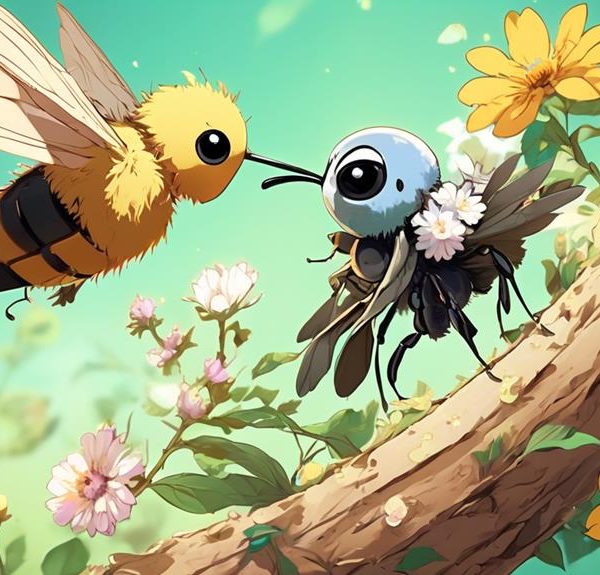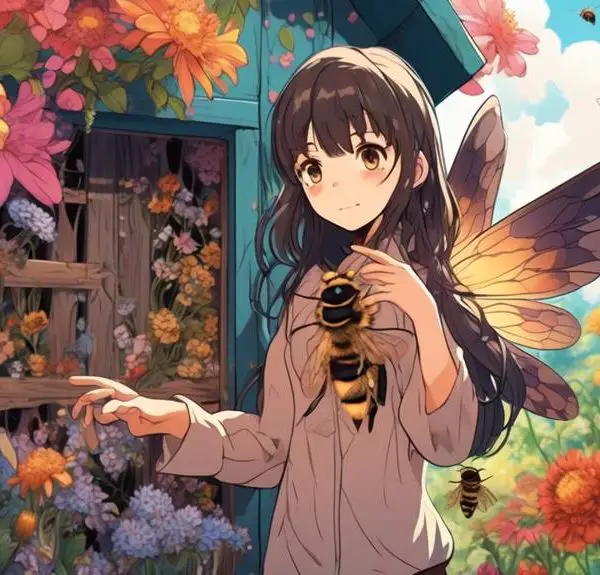K'now more about the hummingbird's diet, as we delve into whether they consider mason bees a meal or not.
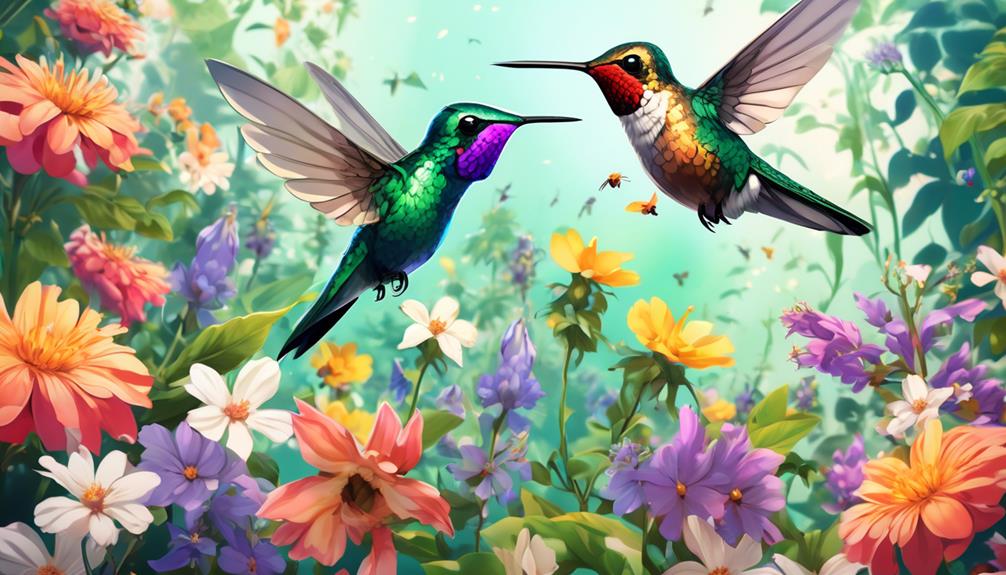
Do Hummingbirds Eat Mason Bees?
You've probably watched a hummingbird, that aerial acrobat of the avian world, hover at a feeder or flower, sipping nectar with its needle-like beak. This common sight paints an almost exclusive picture of the hummingbird as a nectar-loving entity.
However, life, as you well know, is rarely so simple. In the hummingbird's world, nectar is just part of the menu. They're also known to eat insects and small bugs.
Now, here's where it gets interesting – among the myriad bugs out there, do hummingbirds find mason bees a delicacy too? Let's embark on a journey to unpack the truth about this intriguing question.
Key Takeaways
- Hummingbirds primarily feed on nectar and small insects, while mason bees primarily feed on nectar and pollen.
- There is no evidence to suggest that hummingbirds eat mason bees.
- Both hummingbirds and mason bees contribute to pollination and the overall health of the ecosystem.
- A decline in mason bee population could negatively impact pollination rates and plant diversity, affecting other species dependent on those plants.
Understanding Hummingbird Dietary Habits
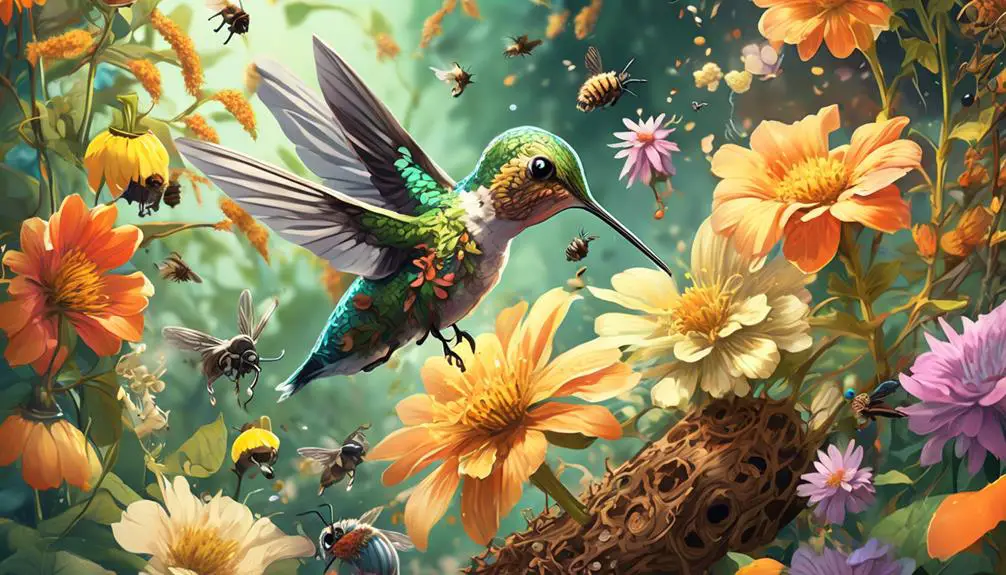
To truly comprehend the diet of hummingbirds, you must delve into their unique eating habits, which primarily revolve around nectar consumption and occasionally include small insects and spiders. These tiny, fast-flapping birds possess a voracious appetite, consuming half their body weight in food each day to sustain their high metabolism.
Let's get analytical. Nectar, a sugary fluid produced by plants, serves as the hummingbirds' primary energy source. They obtain this using their long, slender beaks, designed for sipping nectar from deep within flowers. Your analysis might also reveal that hummingbirds are equipped with a unique tongue structure, allowing them to lap up nectar at lightning-fast rates.
In addition to nectar, hummingbirds eat small insects and spiders. This isn't simply a matter of preference, but rather a nutritional necessity. These protein-packed creatures fulfill hummingbirds' requirements for essential nutrients not found in nectar, including amino acids, vitamins, and minerals.
The Diet of Mason Bees
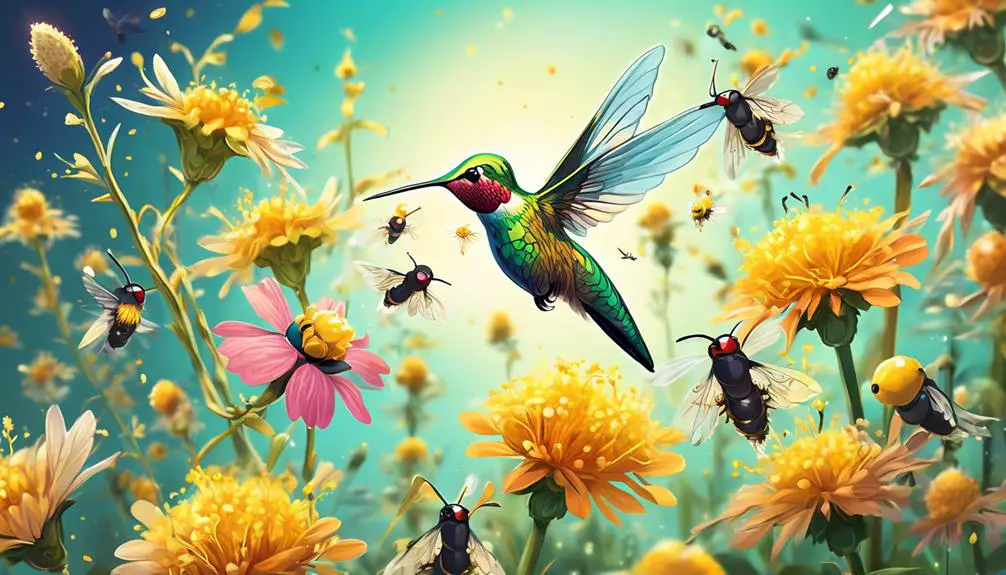
Diving into the dietary habits of mason bees, you'll discover that these industrious insects primarily subsist on a diet of nectar and pollen collected from a variety of flowering plants. While nectar provides them with the essential sugars they need for energy, pollen is a crucial source of protein, necessary for their growth and development.
Let's dig deeper and examine their feeding habits in the table below:
Food Source | Purpose |
|---|---|
Nectar | Energy supply |
Pollen | Protein source |
Water | Hydration & nest construction |
Tree Resin | Nest sealing |
Plant Fibers | Nest construction |
Interestingly, mason bees also consume water, which they use not only for hydration but also in the construction of their nests. Tree resin and plant fibers, too, play a vital role in their survival, serving as essential materials for nest sealing and construction respectively.
Interaction Between Hummingbirds and Mason Bees
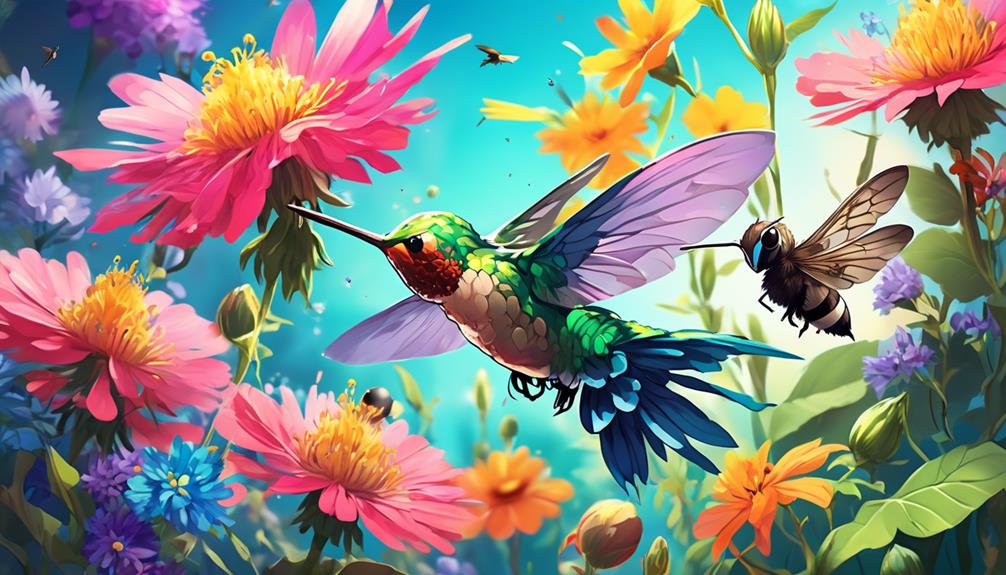
When it comes to the interaction between hummingbirds and mason bees, it's fascinating to observe their co-existence and the potential impacts they've on each other's lives. You'll find that these two creatures, despite their differences in size and diet, share a common ecosystem and often cross paths while foraging.
Mason bees, being industrious pollinators, focus on collecting nectar and pollen from a variety of flowers. On the other hand, hummingbirds, with their long beaks and even longer tongues, sip nectar from the same flowers. It's noteworthy that these species don't compete for resources, rather they contribute to the pollination process, boosting the health and diversity of their shared habitat.
While hummingbirds don't prey on mason bees, their presence can indirectly affect the bees' behavior. The buzzing activity of the bees often attracts hummingbirds, who then inadvertently scare the bees away. This interaction, while not harmful, influences the foraging patterns of mason bees.
In essence, the relationship between hummingbirds and mason bees is one of co-existence, with each species playing a vital role in the ecosystem. Their interaction is a captivating spectacle of nature's balance, underscoring the interconnectedness of all species.
Do Hummingbirds Prey on Bees?
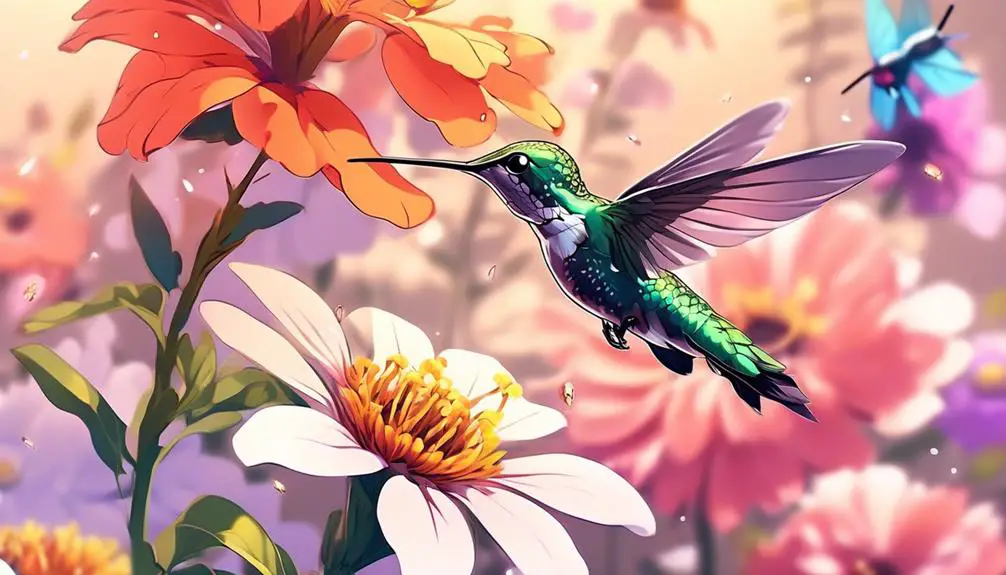
You might be wondering if hummingbirds, with their rapid wingbeats and agile flight, prey on bees such as the mason bees. The answer is, quite simply, no. Despite their swift flight and sharp beaks, hummingbirds are primarily nectarivores, which means their diet consists mainly of nectar from flowers.
Scientifically, hummingbirds are anatomically and physiologically adapted to extract nectar from flowers using their long, slender bills and specially adapted, brush-like tongues. Their digestive systems are also tailored for processing nectar, not for digesting insects such as bees.
While it's true that hummingbirds will occasionally consume small insects and spiders for protein, this typically makes up a very small portion of their overall diet, and there's no evidence to suggest they specifically target bees. In fact, bees can pose a significant threat to hummingbirds, who'd likely get stung in the process of trying to catch one.
Moreover, hummingbirds and bees often compete for the same nectar resources, which means they're more likely to be seen as competitors rather than predator and prey. So, while hummingbirds and bees are frequently seen together around flowers, they aren't likely to be involved in a predator-prey relationship.
Impact on the Ecosystem
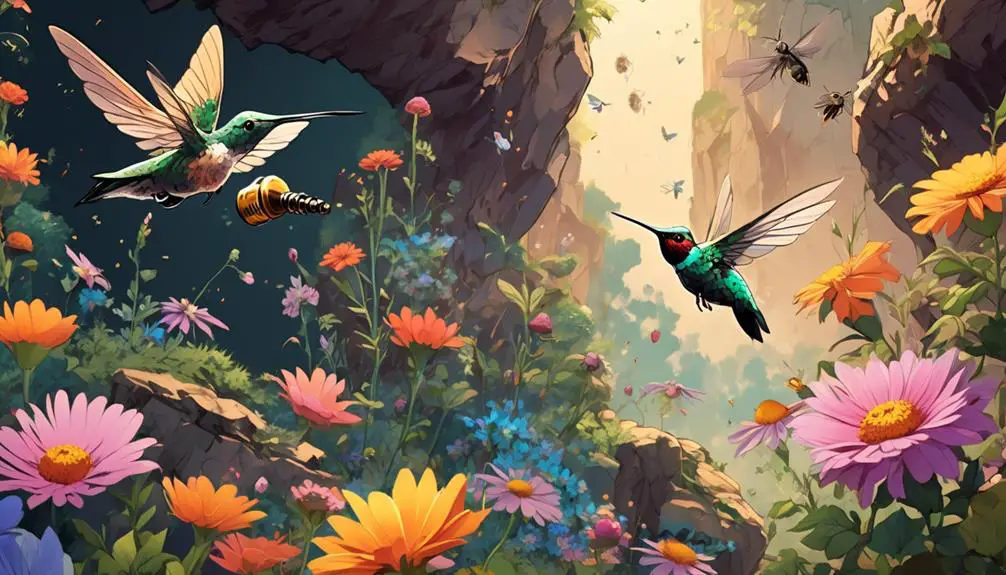
In understanding the interconnected nature of the ecosystem, it's important to consider how both hummingbirds and mason bees contribute to the balance of nature. You see, these creatures play distinct but complementary roles in the ecosystem that maintain its overall health.
Mason bees, for example, are among the most efficient pollinators. They specialize in carrying pollen in a dry form, increasing the chances of successful pollination. This role is essential in the propagation of plants, enhancing biodiversity, and ensuring food security for various species.
Hummingbirds, on the other hand, are crucial for pollination too. They transfer pollen on their beaks and feathers while sipping nectar from flowers. Unlike bees, hummingbirds can reach deep into tubular flowers, pollinating plants that bees can't reach.
However, if hummingbirds were to prey on mason bees, it could disrupt this delicate balance. A decline in the mason bee population would reduce pollination rates, potentially leading to a decrease in plant diversity and abundance. This could, in turn, affect other species within the ecosystem dependent on those plants for survival.
Hence, the diet of hummingbirds, whether it includes mason bees or not, could have far-reaching implications for the ecosystem.
Conclusion
In conclusion, you'll find that hummingbirds don't typically eat mason bees. Their diet consists mainly of nectar, complemented by small insects and spiders. Though they interact in the same ecosystems, hummingbirds aren't predators of bees.
Any impact on the ecosystem is largely indirect, driven by their role as pollinators rather than as predators. Thus, the hummingbird's relationship with the mason bee is one of coexistence, not predation.

